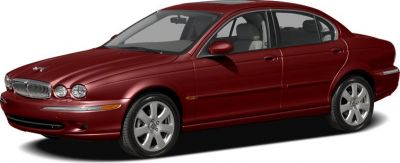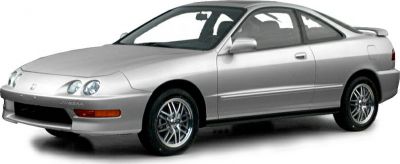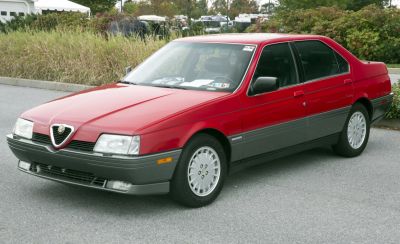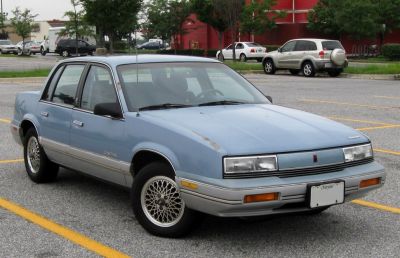 1968 Audi 100 (C1) Dimensions, Size & Specs
1968 Audi 100 (C1) Dimensions, Size & SpecsMeasurements of the 1968 Audi 100, engineered for optimal performance and comfort
| Dimensions | |
|---|---|
| Length: | 4590-4638 mm180.7-182.6 in15.1-15.2 ft |
| Width: | 1730 mm68.1 in5.7 ft |
| Height: | 1425 mm56.1 in4.7 ft |
| Ground Clearance: | 157-161 mm6.2-6.3 in0.5-0.5 ft |
| Trunk Capacity (Max): | 650-651 liter23.0-23.0 cu ft |
| Weight Specifications | |
| Curb Weight: | 1050-1100 kg2315-2425 lbs |
| Maximal permitted Weight: | 1530-1580 kg3373-3483 lbs |
The Audi 100 (C1), produced from 1968 to 1976, represented an important chapter in Audi's history as a mid-size sedan combining refined style with functional dimensions. This first-generation Audi 100 featured a length ranging between 4590 mm and 4638 mm (approximately 181 to 182.6 inches), a width tightly set around 1729 to 1730 mm (68.06 to 68.11 inches), and a height between 1421 and 1425 mm (55.94 to 56.10 inches). Weighing between 1050 and 1100 kilograms (2315 to 2425 pounds), the vehicle balanced lightness with durability. Its maximum gross weight ranged from 1530 to 1580 kilograms (3372 to 3483 pounds), allowing for a sturdy drive while accommodating passengers and luggage. Notably, the Audi 100 (C1) offered a substantial luggage capacity of about 650 to 651 liters (22.95 to 22.98 cubic feet) when the rear seats were folded, underscoring its practical versatility for families and travelers alike. The ride height or ground clearance measured between 157 and 161 mm (6.18 to 6.34 inches), providing adequate clearance for varied road conditions. Overall, the Audi 100 (C1) sedan stood out in its era with dimensions and features that balanced elegance, comfort, and everyday usability, serving as a benchmark for future Audi mid-size vehicles.
Discover the standout features that make the 1968 Audi 100 a leader in its class
Have a question? Please check our knowledgebase first.
The Audi 100 (C1), produced between 1968 and 1976, measures between 4590 mm and 4638 mm in length, which is approximately 180.7 to 182.6 inches. This length range reflects minor variations across different model variants and production years within this first-generation sedan, offering a balanced size that was considered quite spacious for its class during that era.
The width of the Audi 100 (C1) ranges from 1729 mm to 1730 mm, equating to roughly 68.1 to 68.1 inches. This width provides a comfortable cabin space for passengers, allowing for sufficient shoulder room in both front and rear seats. For a sedan of its time, the width contributes to a stable road presence and enhances driving comfort without making it cumbersome for urban driving.
The height of the Audi 100 (C1) ranges from 1421 mm to 1425 mm, which is approximately 55.9 to 56.1 inches. This moderate height supports adequate headroom for both front and rear passengers, contributing to a comfortable seating posture. The height also aids the aerodynamics of the vehicle, balancing sleek design with interior space.
The curb weight of the Audi 100 (C1) spans from 1050 kg to 1100 kg (2315 to 2425 lbs), while the maximum weight ranges between 1530 kg and 1580 kg (3372 to 3483 lbs). Curb weight refers to the vehicle's weight without passengers or cargo, and the maximum weight includes full load capacity. These metrics are crucial as they affect fuel efficiency, handling, and braking performance. The relatively light curb weight for a sedan of this size contributes to its nimble driving characteristics.
With its rear seats folded down, the Audi 100 (C1) provides between 650 and 651 liters of luggage capacity, equivalent to about 22.95 to 22.98 cubic feet. This generous cargo space enhances the car's practicality, enabling owners to transport larger items, luggage for long trips, or bulky goods with ease, which is an impressive feature for a sedan from its production period.
The Audi 100 (C1) features a ride height or ground clearance that ranges from 157 mm to 161 mm, approximately 6.18 to 6.34 inches. This moderate ground clearance strikes a balance between providing enough height to handle uneven road surfaces comfortably and maintaining low aerodynamic drag for better fuel efficiency and stability at speed. It also contributes to a comfortable ride quality without sacrificing handling precision.
Yes, the Audi 100 (C1) will generally fit comfortably into a standard garage. Typical garage dimensions in many regions are about 2.4 to 3 meters wide (7.9 to 9.8 feet) and approximately 5.0 to 6.0 meters long (16.4 to 19.7 feet), so with the Audi 100 (C1)’s length of up to 4.64 meters (15.2 feet) and width of about 1.73 meters (5.7 feet), there is ample space for parking and opening doors. The relatively modest dimensions by today's standards make it an easy fit for most residential garages.
The Audi 100 (C1) was actually a groundbreaking model as it marked Audi's move into a more modern executive sedan segment. It did not have a direct predecessor under the ‘Audi 100’ name, but it was a successor to earlier Audi F103 series models. Compared to these earlier, smaller sedans, the C1 was significantly larger, wider, and heavier, which resulted in improved interior space and ride comfort. It set a new standard for Audi in terms of vehicle size and refinement, moving the brand towards the executive car market.
The Audi 100 (C1) compared favorably against similar executive sedans from the late 1960s and early 1970s, such as the BMW 5 Series E12 and Mercedes-Benz W114/W114. Dimensionally, the Audi was competitive, offering a slightly larger or comparable length and width, which translated to generous passenger and cargo space. From a design standpoint, it combined a modern aerodynamic shape with practicality. In weight, it was typically lighter than some contemporaries, which helped with performance and handling. The Audi 100’s engineering and build quality placed it as a strong contender in the executive sedan market of its era.
The Audi 100 (C1) was known for its clean and aerodynamic design, which was advanced for its time, contributing to better fuel efficiency and lower wind noise. Mechanically, it featured front-engine, rear-wheel-drive layout with a choice of inline four-cylinder engines that balanced power and economy. Its lightweight body (1050 to 1100 kg) supported nimble handling and responsive driving dynamics. The car was also recognized for its high-quality construction, comfortable ride, and reliability, positioning Audi as a premium brand in the executive car segment during its production period.
Discover similar sized cars.

| Production: | 2001-2009 |
|---|---|
| Model Year: | 2001 |
| Length: | 4672 mm183.9 in |
| Width: | 1789 mm70.4 in |
| Height: | 1430 mm56.3 in |

| Production: | 2023-2025 |
|---|---|
| Model Year: | 2024 |
| Length: | 4646 mm182.9 in |
| Width: | 1816 mm71.5 in |
| Height: | 1445 mm56.9 in |

| Production: | 2019-2023 |
|---|---|
| Model Year: | 2020 |
| Length: | 4641 mm182.7 in |
| Width: | 1816 mm71.5 in |
| Height: | 1448 mm57.0 in |

| Production: | 1994-2001 |
|---|---|
| Model Year: | 1994 |
| Length: | 4525 mm178.1 in |
| Width: | 1710 mm67.3 in |
| Height: | 1370 mm53.9 in |

| Production: | 1987-1998 |
|---|---|
| Model Year: | 1987 |
| Length: | 4550-4670 mm179.1-183.9 in |
| Width: | 1760 mm69.3 in |
| Height: | 1356-1400 mm53.4-55.1 in |

| Production: | 1984-1995 |
|---|---|
| Model Year: | 1984 |
| Length: | 4555 mm179.3 in |
| Width: | 1700 mm66.9 in |
| Height: | 1330 mm52.4 in |

| Production: | 2015-2018 |
|---|---|
| Model Year: | 2015 |
| Length: | 4632 mm182.4 in |
| Width: | 1811 mm71.3 in |
| Height: | 1428 mm56.2 in |

| Production: | 2015-2018 |
|---|---|
| Model Year: | 2015 |
| Length: | 4632 mm182.4 in |
| Width: | 1811 mm71.3 in |
| Height: | 1431 mm56.3 in |
